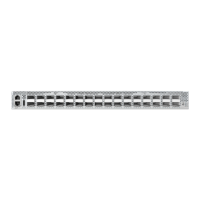C
HAPTER
20
| Unicast Routing
Configuring the Routing Information Protocol
– 484 –
To coexist with a network built on multilayer switches, the subnetworks for
non-IP protocols must follow the same logical boundary as that of the IP
subnetworks. A separate multi-protocol router can then be used to link the
subnetworks by connecting to one port from each available VLAN on the
network.
CONFIGURING THE ROUTING INFORMATION PROTOCOL
The RIP protocol is the most widely used routing protocol. The RIP protocol
uses a distance-vector-based approach to routing. Routes are determined
on the basis of minimizing the distance vector, or hop count, which serves
as a rough estimate of transmission cost. Each router broadcasts its
advertisement every 30 seconds, together with any updates to its routing
table. This allows all routers on the network to learn consistent tables of
next hop links which lead to relevant subnets.
Figure 308: Configuring RIP
COMMAND USAGE
◆ Just as Layer 2 switches use the Spanning Tree Algorithm to prevent
loops, routers also use methods for preventing loops that would cause
endless retransmission of
data traffic. RIP utilizes the following three
methods to prevent loops from occurring:
■
Split horizon – Never propagate routes back to an interface port
from which they have been acquired.
■
Poison reverse – Propagate routes back to an interface port from
which they have been acquired, but set the distance-vector metrics
to infinity. (This provides faster convergence.)
■
Triggered updates
–
Whenever a route gets changed, broadcast an
update message
after waiting for a short random delay, but without
waiting for the periodic cycle.
◆ RIP-2 is a compatible upgrade to RIP. RIP-2 adds useful capabilities for
plain text authentication, multiple independent RIP domains, variable
length subnet masks, and multicast transmissions for route advertising
(RFC 1723).
◆ There are several serious problems with RIP that you should consider.
First of all, RIP (version 1) has no knowledge of subnets, both RIP
A
1
3
6
4
2
5
BC
DE
A
A
B
C
D
Link Cost
0
E
1
1
3
1
0
1
2
1
2
Cost = 1 for all links
Routing table for node A

